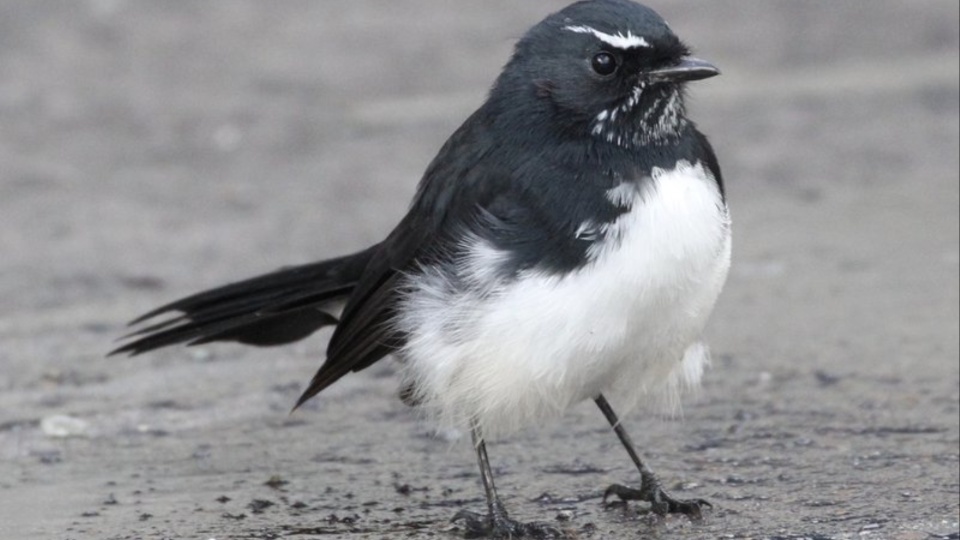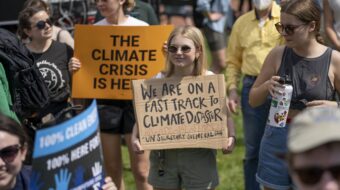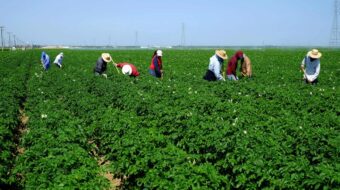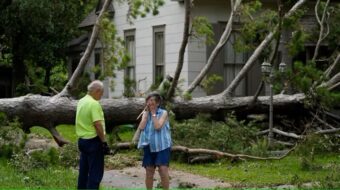
Over the past 50 years, modern intensified agriculture has used new technology and mechanisation, changes in farming practices and operations and agrochemical inputs—weedicides, insecticides, and pesticides—to increase global food production. The consequences have been a devastating loss and degradation of habitat from deforestation, grasslands converted to cropland, and drained wetlands.
Urbanization and climatic changes have helped to create a severe loss of avian biodiversity. As temperatures recently rose across Europe, cold-preferring bird species numbers diminished by 40%, with a loss of 550 million birds. Birds associated with farmlands and grasslands in North America, Europe, and Australia have suffered a severe decline over this period.
According to “State of the World’s Birds,” in the Annual Review of Environment and Resources (2022), bird populations are facing a staggering decline.
Rachel Carson warned in her Silent Spring (1962) that if the U.S. kept spraying DDT, it would greatly reduce, not only insects but bird numbers at an alarming rate. DDT affects a bird’s physiology with birds laying brittle-shelled eggs causing a massive loss of chicks. Raptors, eagles, and hawks were in steep decline in the 1960s due to DDT. Banning the insecticide in the 1970s helped bring back their numbers.
Other insecticides continue to have a devastating impact, however. Tim Halliday in Vanishing Birds: Their Natural History and Conservation (1978) describes how the pesticide DDD (Dichlorodiphenyldichloroethane) wiped out the Grebe population on Clear Lake in California. Neonicotinoid, a class of neuro-active insecticides used against sucking and chewing pests, is linked to adverse ecological effects, including the decline of populations of insect-eating birds.
Despite these negative findings, President Donald Trump eased bans on some neonicotinoids during his time in office. The insects that survived these poisons developed a resistance, creating a further insect plague. Birds control insect populations, pollinate crops, distribute seeds, are food for predators, and perform myriad services to enrich biodiversity in our ecosystems.
Modern intensive farming relies on insecticides which have had a devastating impact on bird populations. Research in Germany, published in Nature (2017), found that 77% of the insect populations they rely on for food have disappeared since 1989. In 2019, research published in Science found that migratory songbirds that had eaten seeds with sub-lethal doses of insecticides delayed their migration, thereby lowering their breeding success.
The present global bird population collapse will have an irreparable impact on food production. Conservation scientist Ken Rosenberg of the Cornell Lab (retired) writes: “Because birds are highly visible and sensitive indicators of environmental health, we know their loss signals a much wider loss of biodiversity and threats to human health and well-being.”
The International Union for Conservation of Nature’s Red Data Book reports the population changes among the world’s 10,824 bird species. Worldwide, 48% of bird species have undergone major population declines.
In the United States, the Migratory Bird Treaty Act protects migratory birds, and the Endangered Species Act protects the habitat of rare birds. Even so, two-thirds of North America’s bird species are facing extinction, with there being 29% fewer birds than in 1970. According to Brooke Bateman, director of climate science at the National Audubon Society, since the 1970s the number of birds of breeding age has declined by three billion in North America.
When the first European explorers travelled across Australia, they were shocked at the sheer size of our bird population. It was not uncommon for a single flock of birds to take three hours to fly overhead. These birds had evolved to survive in huge flocks, so when the bird numbers in these flocks diminished, the bird population dramatically crashed.
Today, according to a study by the University of Queensland, Charles Darwin University, WWF Australia, and Australian Wildlife Conservancy, 70% of Australia’s threatened bird species have disappeared since European colonization. Dr Michelle Ward said, “A whopping 69% of the country is missing some of its most enigmatic bird species. And 10 birds have become locally extinct from 99% of their historical habitat, with their remaining habitats having become much more fragmented.”
Once common birds such as Willie Wagtails, Brolgas, Boobook Owls, and Magpies have now largely disappeared from our cities.
There are 1,300 bird species in Australia and its territories that face extinction. The most vulnerable is the Mukarrthippi grasswren, which has only two or three breeding pairs left. Australia’s rarest bird of prey, the red goshawk, could soon be extinct. The Cape York Peninsula, Queensland is the only place known to support breeding populations.
In 2016, thousands of emperor penguin chicks drowned when their sea-ice breeding ground was destroyed in severe weather in the Weddell Sea in Australia’s Antarctic Territory. The colony on the Brunt Ice Shelf has shown no sign of recovery. Of the 216 Australian bird species at risk of extinction: 23 are critically endangered; 74 are endangered; 87 are vulnerable; and 32 are near-threatened.
In the last three decades, Australia has had one of the highest deforestation rates in the world, with Queensland being the worst, clearing 296,000 hectares of bushland in 2013-14. Land clearing in rainwater catchments that drain onto the Great Barrier Reef constituted 35% of total clearing. The Moreton Bay Council in Brisbane has allowed the building of a 3,000-unit marina complex in Australia’s most important site for eastern curlews. The National Science Programme’s A Threatened Species Index for Australia Interim Report (2018) estimated that there has been a 25% reduction in threatened and near-threatened birds since 1980.
Currently, there is no fully effective means to report on changes in Australia’s overall biodiversity. More detailed information is required to determine trends in threatened species numbers. Such information will greatly improve the evaluation of large-scale programmes, such as the Australian government’s Threatened Species Strategy, which will aid in identifying priorities for further investment.
Our laws need to be toughened to stop land clearing which destroys sensitive habitats. By doing so our native bird populations will have a chance to recover. The organization Birdlife Australia sees the main solution is for the Australian government to enforce national standards that protect critical habitats from destruction.
An independent National EPA (Environmental Protection Authority) would enforce regulations and stop the legal loopholes that favour destructive land development. Over the past decade, positive results have been produced by habitat restoration and conservation, with 23 bird species becoming less threatened.
The Guardian (Australia)
We hope you appreciated this article. At People’s World, we believe news and information should be free and accessible to all, but we need your help. Our journalism is free of corporate influence and paywalls because we are totally reader-supported. Only you, our readers and supporters, make this possible. If you enjoy reading People’s World and the stories we bring you, please support our work by donating or becoming a monthly sustainer today. Thank you!












Comments